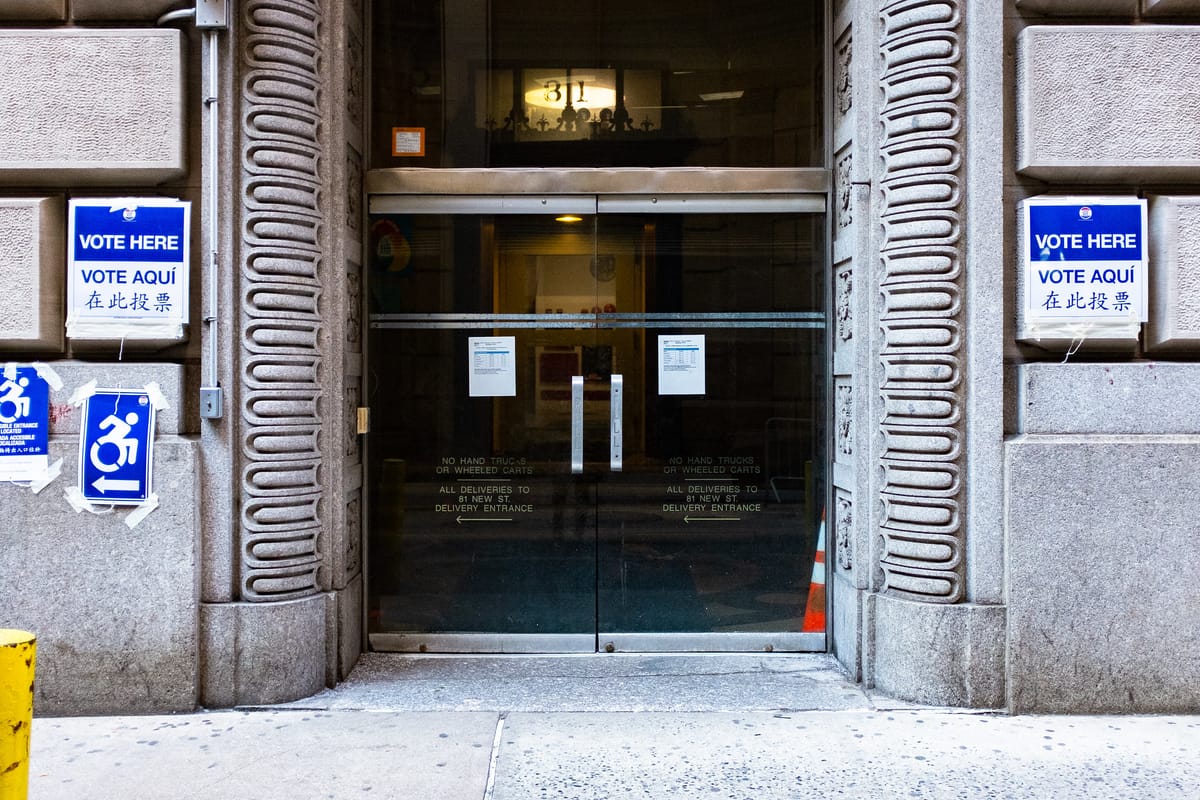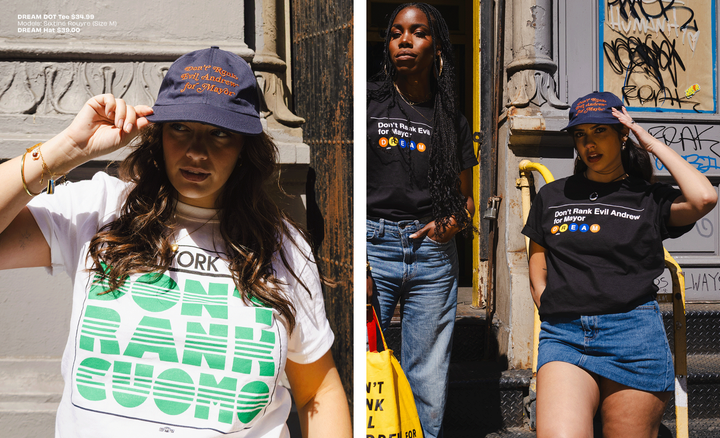All your ranked-choice voting questions, answered
Plus, exactly how to maximize your voting power against Andrew Cuomo

Ranked-choice voting has only been on the scene in New York City elections since 2021, but the system has been pretty immediately well-liked and widely used — 85% of voters ranked at least two mayoral candidates in the June 2021 primary, and 45% ranked a full five, according to nonprofit advocacy organization Common Cause New York. Still, you’d be forgiven if you have some lingering questions about the whole thing.
In an election when the stakes are so incredibly high — and when campaigns are really starting to incorporate ranked-choice into their strategies in earnest — everyone’s anxious to nail down their strategy exactly right.
Well we’ve got some good news: the strategy’s a lot simpler than you might think it is, and it’s a process you’re more likely to feel good about than the standard-issue election format. With ranked-choice, “You’re not going to waste your vote by voting with your conscience,” said Karen Wharton, from Citizen Action of NY and Public Policy and Education Fund of NY, who will be leading a ranked-choice voting training in Harlem on May 31.
In addition to throwing your weight behind the candidates you do like, what do you really need to know to make sure Andrew Cuomo never darkens City Hall’s doors as mayor?
We polled you for your most pressing RCV questions last week, and now we’re back with answers:
Remind me, why do we do this now?
In 2019, New York City voters approved a ballot measure to institute a ranked-choice system for primary and special elections in the city, and we’ve been doing it since 2021. Advocates say the ranked-choice system is more democratic in that it determines the candidate with the broadest base of overall support among voters, rather than letting one person with an especially passionate base take the whole thing by even just a handful of votes.
The system also encourages candidates to work together (rather than smearing each other), the better to get on the ballots of voters who might be ranking their opponents number one. A prime example of this: Zohran Mamdani encouraging his supporters to throw some cash toward the Adrienne Adams campaign in hopes of strengthening both of their overall chances of knocking the hated former governor Cuomo out of the race (more on that in a bit).
If you or anyone in your life needs them, Rank the Vote has voter resources in a number of different languages. You could also just enjoy this excellent recent explainer from Councilmember Chi Osse:
How do I fill out the ballot?
The process will be pretty visually pretty intuitive once the ballot is in front of you; you’ll be presented with a list of candidates and slots to rank them as your first, second, third, fourth or fifth choice. For a visual aid, Rank the Vote has a practice ballot in which you choose from a roster of imaginary bodega snacks using a ranked-choice system:
I really only like one candidate. Can I just rank one person?
This still being a democracy, yes, you can vote however you want. However, most people wouldn’t recommend leaving four of your five slots blank.
“If for whatever reason you just want to vote for one person, you’re well within your rights to do that,” said Wharton.
“However, the power in the ranked-choice ballot is the ability to select and rank more candidates,” Wharton added. “The more candidates you rank, the more likely you are to ultimately choose the winner. Maybe it’s not your first choice, but it’s someone you can live with, whereas if you just choose one it’s all or nothing. It’s like taking out insurance in case your favorite candidate doesn’t win.”
And if you try to be a wise guy and fill out your candidate of choice in multiple positions, know that it will still only be counted once.
A large number of Cuomo voters are currently taking the “my guy and my guy only” approach, according to recent polling. On the opposite end of the spectrum — and for the fervently Zohran-pilled among our readership — Mamdani specifically noted at a recent candidate forum that he’s encountered a large number of voters who think it’s better to only vote for one person, and has been working to convince them to add more candidates to their rankings.
One of the main things I’ve heard so far this election is “don’t rank Andrew Cuomo.” What’s that about?
Well, first of all, it’s about not letting one of the worst possible candidates imaginable become mayor of New York City. It’s also one of the reasons ranked-choice has become such a comparatively large part of the conversation in this election.
Back in February, a group of progressive New Yorkers launched the DREAM for NYC campaign, short for Don’t Rank Eric or Andrew for Mayor. Since Eric Adams dropped out of the Democratic primary to run as an independent, DREAM has pivoted to an equally important message: Don’t Rank Evil Andrew for Mayor.
The idea here — besides the obvious, that Andrew Cuomo is a disgrace as both an individual and a former governor and would be a disaster as New York City’s mayor – is to educate voters around not adding Cuomo as a last resort anywhere on their ballots, not even in fifth place.
Per the DREAM website: “To prevent Andrew Cuomo from getting your vote in NYC’s Ranked Choice Voting system you have to do something very specific: do not rank him. If you rank him second to last, he could get your vote. If you rank him last, he could get your vote. The only way to guarantee that you are not voting for evil Andrew is to leave him off your ballot entirely.”
I like a few non-Cuomo candidates, but I’m worried about splitting or diluting the vote among them. What should I do?
This is where one of the biggest benefits of ranked-choice comes into play. While a lot of well-meaning voters are going full math lady meme on the strategy, experts say it’s really not necessary.
“Ranked-choice voting eliminates the spoiler effect, so we don’t have to worry about vote splitting and spoilers,” said Wharton. “You’re not hurting your favorite candidates by ranking other candidates.”
The strategy behind your ranking should be as simple as deciding which candidates you like the most for the job, and in what order, versus elaborate calculations about throwing your support behind who’s most likely to win.
“I think we’re humans and we want to find some kind of strategic voting, because we’ve always had to do that,” Wharton said. “Now you can rank your favorite candidate number one and choose some more quote-unquote ‘viable’ candidates as second, third, fourth and fifth choices.”
For a quick visual of the logic that applies here, we once again defer to that video from Chi Osse:
I have multiple candidates I could be OK with, but maybe not a full five. Do I have to fill out all five spaces?
While it’s a good idea to fill out all five spaces, it’s more important that you not rank anyone who you sincerely wouldn’t want as our next mayor. (This comes back to the core principle of the DREAM messaging.)
“Do not rank anyone you don’t want to win,” said Wharton. “If you include someone in your ballot ranking, you’re signaling that you don’t mind if that person wins. So if you don’t want Johnny, do not rank Johnny anywhere on your ballot.”
If there are truly fewer than five candidates you’re willing to rank, only rank as many as you’re comfortable with.
“You’re not mandated to rank all five; I highly recommend everyone do their top five, but it doesn’t mean you have to,” said Nia Alvarez-Mapp, an education and outreach organizer at Common Cause New York.
“This is the beautiful part of ranked-choice voting,” she said. “It gives folks the choice to not pick someone who they don’t feel comfortable with or don’t see in office.”
Is there anything I can do that would accidentally disqualify my ballot?
Yes; if you decided to put multiple candidates in the same position (i.e. two people ranked as number one), your ballot will not be counted.
Is there anything else I should do if I don’t want Andrew Cuomo, famously an enemy of this entire city, to become its mayor?
For our money, filling out all five slots in your ranking is also a key part of your defense against the possibility of a Mayor Cuomo. And while we won't be putting out an official ranking recommendation, we also think there's a deep enough bench of solid progressive candidates in this race that you can fill up all five spots on your ballot and feel good about your choices.
Groove reader Bryan put it succinctly in last week’s newsletter question of the week:
“[Picking five people] is five chances to make Cuomo lose. Assume it’s going all five rounds and it’ll be close. It's OK if you put the non-Cuomo frontrunners down the list if they're not your first choice, your ballot will float along in someone's bucket until there's a winner! You could be the one to kick that creep back out of our city!!”




Comments ()